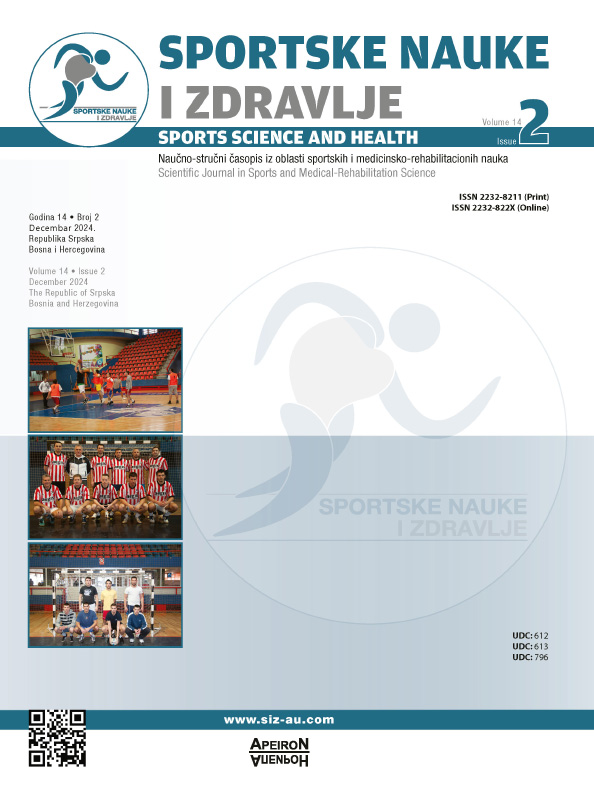Nutritional Status and Body Composition in a Sample of Adults After Nutrition Counseling
DOI:
https://doi.org/10.7251/SSH2402144PKeywords:
BMI, fat mass, muscle mas, total body waterAbstract
Obesityis one of the most common risks for chronic non-communicable diseases. The aim of this work was to assess changes in nutritional status and body composition in working adults after nutrition counseling. The research was conducted during 2022 at the College of Vocational Studies in Subotica, Serbia. The initial assessment included 31 participants and 18 participants in the control assessment. Data on physical activity were collected by a questionnaire. Nutritional status and body composition were determined using the bioimpendancescale (InBody 230). The five-months nutrition counseling included practical tips for a balanced diet and physical activity. Pearson’s correlation coefficient and Wilkoxon’s rank test were applied for the statistical analysis. A quarter of participants had a sedentary lifestyle and only 13% of them are physically active at least 150 minutes a week. The average BMI 27.7 kg/m2, and 62% of participants were overweight or obese. The respondents weighed an average of 26.6 kg, i.e. 31.2% of fat tissue. After the conuseling, a third of participants experienced a decrease in percentage of fat tissueand abdominal fat and 40% had an increase in muscle mass. However, 48% of respondents had an increase in BMIafter counseling.
The body weight, body mass index or the amount of adipose tissue did not change significantly after nutrition conuseling, butthe deviation of the actual compared to the ideal body masssignificantly greater. After the nutrition counseling, an increase in muscle mass, i.e. lean body mass and total body waterwas determined.
